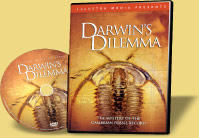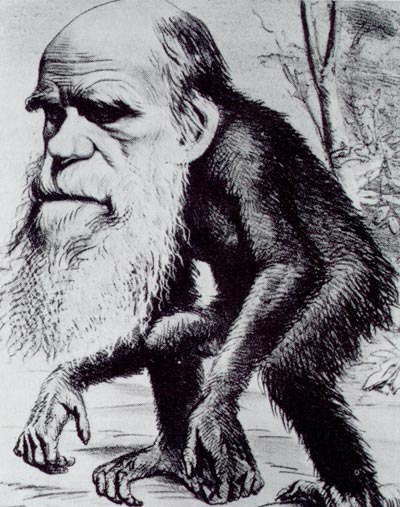 How understanding the difference between hypothesis and theorem can often enable us to assess the validity of these proposals. There is a video produced by Illustra Media called Darwin’s Dilemma that discusses how recently observed scientific data raises doubts about the validity of Charles Darwin’s hypothesis concerning the origin of different species of animals – ‘evolution’. In order to be able to make a judgment as to whether or not Darwin’s proposal about the origin of species is scientifically proven or not, one must understand clearly the distinction between hypothesis and theorem. This is because hypothesis does not constitute scientific proof; theorem does. This video is good because it clearly explains the difference between the two cases.
The scientific method involves the observation of natural phenomena and then a presentation by the scientist of a possible explanation of these observations in the form of the physical laws that govern the processes. This first explanation he produces is a hypothesis. Darwin’s ‘theory’ of evolution as most people refer to it was in fact presented not as a theory, in the strict scientific sense, but as a hypothesis. And here is the important point to understand: even if we assume that research and logic behind the hypothesis is sound, if all we have is a hypothesis, it does not yet constitute scientific proof. We might characterise it at this stage it as only considered possibly true. In order to make that transition from possibly true (hypothesis) to probably true (theorem) the hypothesis has to be tested. Most commonly, the scientist tests the hypothesis by looking for new phenomena that are predicted by the hypothesis and which could not have been predicted otherwise. If these data are subsequently observed repeatedly, then the hypothesis is confirmed and it is now considered a theorem; and probably true.
How understanding the difference between hypothesis and theorem can often enable us to assess the validity of these proposals. There is a video produced by Illustra Media called Darwin’s Dilemma that discusses how recently observed scientific data raises doubts about the validity of Charles Darwin’s hypothesis concerning the origin of different species of animals – ‘evolution’. In order to be able to make a judgment as to whether or not Darwin’s proposal about the origin of species is scientifically proven or not, one must understand clearly the distinction between hypothesis and theorem. This is because hypothesis does not constitute scientific proof; theorem does. This video is good because it clearly explains the difference between the two cases.
The scientific method involves the observation of natural phenomena and then a presentation by the scientist of a possible explanation of these observations in the form of the physical laws that govern the processes. This first explanation he produces is a hypothesis. Darwin’s ‘theory’ of evolution as most people refer to it was in fact presented not as a theory, in the strict scientific sense, but as a hypothesis. And here is the important point to understand: even if we assume that research and logic behind the hypothesis is sound, if all we have is a hypothesis, it does not yet constitute scientific proof. We might characterise it at this stage it as only considered possibly true. In order to make that transition from possibly true (hypothesis) to probably true (theorem) the hypothesis has to be tested. Most commonly, the scientist tests the hypothesis by looking for new phenomena that are predicted by the hypothesis and which could not have been predicted otherwise. If these data are subsequently observed repeatedly, then the hypothesis is confirmed and it is now considered a theorem; and probably true.
Darwin’s hypothesis predicted the existence of fossils of intermediary species that indicated that all known species of animals were descended from a common ancestor. The dilemma referred to in the title is that the fossil evidence has not yet supported the hypothesis. This does not in itself disprove the hypothesis. It is still possibly true and in the past many argued that we still might find the fossils in the future because the fossil record is incomplete. The point that the video makes is that after more than 100 years of scientists looking for such fossils, they still have still not been found. Furthermore, advances in science coupled with the recent discovery of many new fossil records seem to indicate that a strong argument could made that the fossil record is close to being complete. This being the case it is most likely that we will never find fossils of those intermediary species. Therefore, it argues, it might be time for even the hypothesis to be discarded as probably not true; at the very least we should start looking for an alternative explanation for the origin of species.
In reaction to this the following points are probably worth making also: first, invalidating one hypothesis doesn’t automatically make another true. Each should be considered on its own merits. For example, intelligent design or creationism should not be considered true simply because we consider that we failed to demonstrate that evolution constitutes a theory. These hypotheses should be considered on their own merits.
 Second, it is important to be aware of whether or not a proposal is hypothesis or theorem before we can decide whether or not to take action in response to it. Just as one can be too quick to accept a hypothesis as truth, one can in the other extreme be overly skeptical and reject proven theorems. Scientific proof is not a formal proof of truth according to deductive logic (for reasons too long to go into here). This means that even when a proposal makes the transition from hypothesis to theorem it does not go from being categorized as ‘possible’ to being categorized as ‘certain’; but rather from ‘possible’ to ‘probable’. We cannot be absolutely certain of our theorem because unless we have data in regard to our proposal as it applies to the whole universe over all time (which we never do) it is always possible that in the future new data will emerge which will undermine it. All theorems are in this sense merely provisional. However, although we say that an element of doubt remains, we say also that once a theorem has been established that we consider it to be sufficiently close to certainty that we behave as though it is true. So we go ahead and build the bridge, construct the building, or manufacture the drug and entrust our safety to them all. Some who are overly skeptical of science as a discipline reject even proven theorems on the grounds that some doubt remains, or that past theorems subsequently proved false and had to be revised. This is not, in my opinion, a reasonable course of action. At some point you have to act with the balance of probability and behave as though it is true, and the transition from hypothesis to theorem is that point. The steady progress of our scientific knowledge since the scientific method was developed in the middle ages points to the general (if not perfect) reliability of acting on the assumption that a scientific theorem is true.
Second, it is important to be aware of whether or not a proposal is hypothesis or theorem before we can decide whether or not to take action in response to it. Just as one can be too quick to accept a hypothesis as truth, one can in the other extreme be overly skeptical and reject proven theorems. Scientific proof is not a formal proof of truth according to deductive logic (for reasons too long to go into here). This means that even when a proposal makes the transition from hypothesis to theorem it does not go from being categorized as ‘possible’ to being categorized as ‘certain’; but rather from ‘possible’ to ‘probable’. We cannot be absolutely certain of our theorem because unless we have data in regard to our proposal as it applies to the whole universe over all time (which we never do) it is always possible that in the future new data will emerge which will undermine it. All theorems are in this sense merely provisional. However, although we say that an element of doubt remains, we say also that once a theorem has been established that we consider it to be sufficiently close to certainty that we behave as though it is true. So we go ahead and build the bridge, construct the building, or manufacture the drug and entrust our safety to them all. Some who are overly skeptical of science as a discipline reject even proven theorems on the grounds that some doubt remains, or that past theorems subsequently proved false and had to be revised. This is not, in my opinion, a reasonable course of action. At some point you have to act with the balance of probability and behave as though it is true, and the transition from hypothesis to theorem is that point. The steady progress of our scientific knowledge since the scientific method was developed in the middle ages points to the general (if not perfect) reliability of acting on the assumption that a scientific theorem is true.
To summarize: to the degree that we must act on a proposal, we treat a hypothesis as not true, and a theorem as true. Certainly, sometimes this will end in disaster - bridges do fall down from time to time, and medical cures sometimes prove to have previously unforeseen side effects. However, in order to lead a life at all, we have to do the best we can with the best information available and this is why we do it.
In regard to Darwin’s proposal concerning the origin of species: some protestant Christian denominations especially seem anxious to establish that evolution could never become proven theorem, because they fear that it undermines the truth of the Bible rather than a desire to find out what is true. As a Catholic I have no such worries and can look at how the science plays out with a detached interest.
To understand the distinction between hypothesis and theorem often allows non-scientists to assess the validity of most discussions about science without ever needing to see the raw data or understand deeply the scientific analysis of it. A huge proportion of the articles written about hot scientific topics, such as anthropomorphic global warming, make arguments (pro- and con-) that claim to be based in scientific fact, but are in fact presenting hypothesis and not theorem. Often they do not use scientific arguments at all. They might for example give anecdotal stories based upon personal memories about how hot or cold it was in the past compared to now, especially if we are now going through a cold snap or a heat wave. Notwithstanding the unreliability of memory in gauging temperature, this ignores the fact that extreme conditions do not indicate general trends. Sometimes we are told that something must be true because ‘2,000 scientists say so’ (when democracy is not a principle for determining truth in science - it has to be tested using objective standards); or tell us we have to act now because the penalties of not doing so are too great to contemplate (without regard to the actual likelihood of it being true, which is absurd). None of these types of argument should be taken seriously when considering whether or not something is true and demanding greater clarity from our journalists might actually force them to be more responsible and rigorous in reporting on such things (although I’m not holding my breath).
Incidentally, this lack of rigour in reporting science is not new. The dispute between members of the hierarchy of the Church and Galileo was about many different things, but in regard to science it was about whether his proposal could be considered a hypothesis or a theorem. Galileo was told, you can teach this, but only as a hypothesis. Galileo insisted on describing it as proven theorem however. In this regard Galileo was wrong and St Robert Bellarmine was right. The necessary data that confirmed the proposal as a theorem was not observed until the 19th century.


